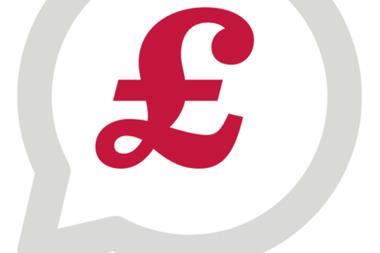The EKW PAYEPeople Annual Forecourt Wages Report 2009
It’s that time of year again. For some it means party conference time; while others are preparing shop displays for Halloween and Bonfire Night; and those with poetic souls revel in the glorious colours of autumn.
Here, we take a measure of what forecourts are paying their staff (well, we are accountants first and foremost!).
This is the 12th year in succession that we’ve done it, but for any readers not yet familiar with this report here’s a quick reminder of how we do it and why it’s unique.
We process the weekly and monthly payslips of thousands of staff on behalf of hundreds of forecourt operators across the British Isles.
In September of each year we capture a ’freeze-frame’ of what each hourly-paid employee received as their hourly rate during that month. The data is then split by geographic region and we work out the national and regional average pay rates. Simple really.
The reason we believe it to be unique, is that we take the actual pay rates that we have processed on behalf of employers as far as we’re aware every other ’pay survey’ is the result of employers or employees being asked how much they pay or receive, questions that can result in some rather dubious answers!
So on with the figures. Twelve months ago, with the then figure at £5.80 an hour, our historic data trend analysis predicted a national rate for September 2009 of around £5.95 an hour. How close was that prediction?
UK national average rate for September 2009 was £5.90 per hour. An increase on 2008 of 1.7%
Well, we weren’t too far off. The most likely explanation for the lower than predicted figure being the current recession with unemployment having risen considerably during the last year, it’s hardly surprising that wage rates have been depressed.
While the national figure shows relatively little change on last year, when we break the figures down into regions, there has been quite a lot of movement.
Here’s the 2009 pay league showing any movement up or down:
South West England £6.03 an hour is the top-paying region again although, in fact, the average pay rate here appears to have fallen by 1.5% from the £6.12 we recorded last year.
This region also recorded some of the lowest pay rates, which is most likely due to the increased use of ’junior’ staff (16- to 17-year-olds) working in the forecourt shops.
Wales £5.95 an hour up from seventh to joint second in the pay league with a 4.6% increase on last year’s £5.69 an hour.
Northern Ireland £5.95 an hour another region with a large jump in rates; from bottom of the league last year (when it was £5.50) to joint second with an increase of 8.2%
North of England £5.93 an hour up from fifth place to fourth this year with an increase of 3.3%
Eastern England £5.92 an hour down from fourth to fifth place with a 2.6% increase.
This is a little surprising perhaps, because this region has often been in the top three in our figures over the years.
South East England £5.91 an hour down from third place to sixth with a relatively small increase of 1.9% on last year.
This is another region that has featured in the top three more often than not over the years. This was almost the biggest surprise in this year’s results.
Midlands £5.90 an hour up from ninth place to seventh in the league, with an increase of 4.6% on last year. It also showed the highest individual pay rate in this sample.
North East England £5.88 an hour steady in eighth place again, with an increase of 3.9% on last year.
Greater London £5.85 an hour now this was the surprise of the year!
Over the past 12 years this region has rarely been out of the top three, and often held the top position but not this year.
Another region where average pay rates appear to have fallen, and by the same 1.5% we’ve recorded in the South West.
North West England £5.84 an hour still in ninth place despite an increase of 3.9% on last year’s figure.
Scotland £5.82 an hour bottom of the league, dropping from sixth place last year, despite an increase of 2.1% .
Overall then we can see that average pay rates between the regions have narrowed somewhat.
Some of last year’s top payers have actually cut their average rates over the last 12 months, while some of those who’ve traditionally been near the bottom of the league having seen some inflation-busting rises over the same period.
Another National Minimum Wage rate rise this month
Just a reminder that the National Minimum Wage rate increased slightly on October 1, 2009 (just a few weeks after our wage figures were compiled) to:
£5.80 per hour for employees 22 years of age and over;
£4.83 per hour for employees between 18 and 21 years of age;
£3.57 per hour for employees 16 and 17 years of age.
We don’t really do ’predictions’, preferring actual data; however the mathematical trend from our last 12 years’ published data suggests a rate of £6.13 an hour by this time next year which seems very unlikely in the current economic environment unless some very major recovery happens soon.
Last but not least, special thanks to Allan Pearson and his team at PAYEPeople without whose data and help we wouldn’t be able to bring you this exclusive report in Forecourt Trader each year.































No comments yet